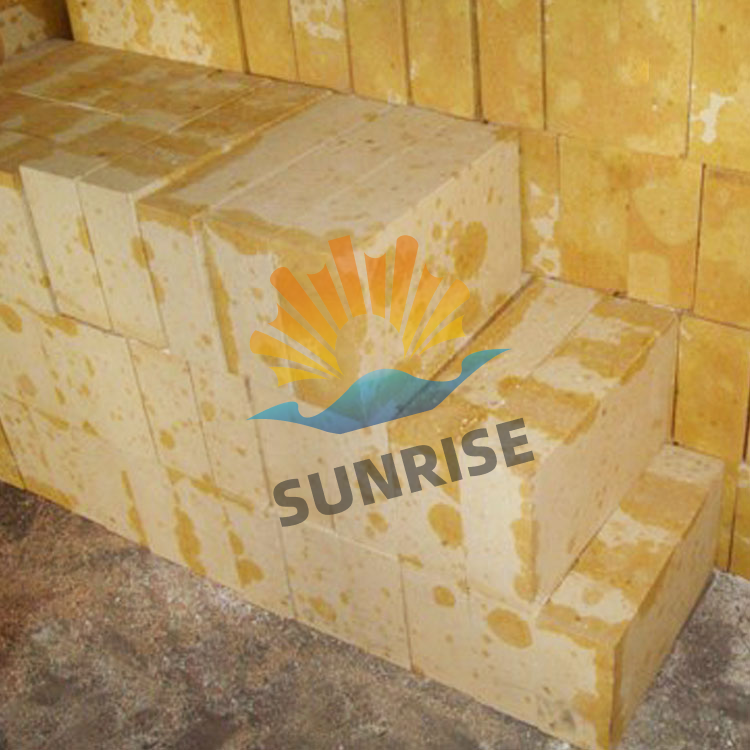.jpg?x-oss-process=image/resize,h_1000,m_lfit/format,webp)
In high - temperature industries, the significance of refractory materials cannot be overstated. These materials are the backbone of processes such as glass melting, steelmaking, and cement production. Among them, fused silica bricks stand out for their exceptional performance in extreme heat conditions. Let's delve deeper into what makes these bricks so remarkable.
Fused silica bricks exhibit several remarkable physical properties in high - temperature environments. One of the most notable is their high viscosity. At temperatures above 1400°C, fused silica bricks maintain a viscosity that allows them to resist deformation. For example, while common refractory materials may start to soften and lose their shape at around 1300°C, fused silica bricks can withstand up to 1700°C without significant deformation. This high - temperature stability is due to the unique molecular structure of silica, which forms a strong network that resists thermal stress.
Another key property is their high strength. Tests have shown that fused silica bricks can have a compressive strength of up to 100 MPa at high temperatures. This strength enables them to support heavy loads in industrial furnaces and kilns, ensuring the structural integrity of the equipment.

When compared with common refractory materials like clay bricks and magnesia bricks, fused silica bricks have distinct advantages. A crucial aspect is the thermal expansion coefficient. Clay bricks typically have a thermal expansion coefficient of around 5 - 7 × 10⁻⁶/°C, while magnesia bricks have a coefficient of about 13 - 15 × 10⁻⁶/°C. In contrast, fused silica bricks have an extremely low thermal expansion coefficient of approximately 0.5 - 1 × 10⁻⁶/°C. This low coefficient means that they experience minimal dimensional changes during heating and cooling cycles, reducing the risk of cracking and spalling.
| Refractory Material | Thermal Expansion Coefficient (× 10⁻⁶/°C) | Maximum Service Temperature (°C) |
|---|---|---|
| Clay Bricks | 5 - 7 | 1300 - 1400 |
| Magnesia Bricks | 13 - 15 | 1600 - 1700 |
| Fused Silica Bricks | 0.5 - 1 | 1700 - 1800 |
Fused silica bricks have found wide applications in various high - temperature scenarios. In the glass industry, they are used in the melting tanks of low - alkali borosilicate glass. Their low thermal expansion and high chemical resistance ensure a stable and long - lasting lining for the tanks, reducing production downtime and improving glass quality. For instance, a glass manufacturing plant reported a 20% increase in production efficiency after replacing their old refractory lining with fused silica bricks.
In the steelmaking industry, these bricks are used in ladles and tundishes. Their high strength and resistance to slag corrosion help to extend the service life of these vessels, resulting in significant cost savings. A steel mill found that using fused silica bricks in their ladles increased the ladle's lifespan by 30%.
.jpg)
Sunrise Factory is a leading producer of fused silica bricks. Their production process starts with high - purity silica raw materials. These materials are carefully selected and processed to ensure the right chemical composition. The melting process is carried out in electric arc furnaces at extremely high temperatures, followed by precise casting and annealing to achieve the desired physical properties.
Quality control is a top priority at Sunrise Factory. They conduct a series of strict tests, including chemical analysis, physical property testing, and microscopic examination, at every stage of production. This rigorous quality control ensures that each fused silica brick meets the highest industry standards.
.jpg)
If you're looking for a reliable refractory solution for your high - temperature processes, fused silica bricks are an excellent choice. To learn more about our fused silica bricks or to discuss your specific requirements, please don't hesitate to contact us. Our team of experts is ready to provide you with detailed information and professional advice.


